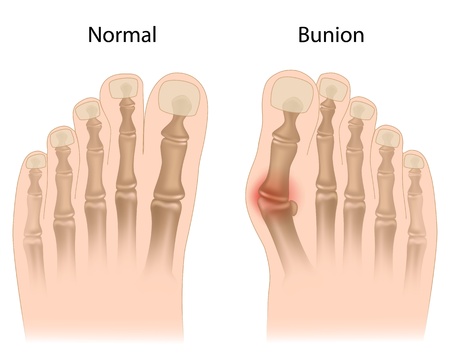Understanding Speech and Swallowing Challenges in Parkinson’s Disease
Parkinson’s disease (PD) is a progressive neurological disorder that affects millions of Americans. While many people associate PD with movement difficulties like tremors and stiffness, it can also have a significant impact on speech and swallowing abilities. These challenges can affect daily life, social interactions, and overall health.
How Parkinson’s Disease Impacts Speech
People living with Parkinson’s often experience changes in their voice and the way they speak. Some common speech issues include:
- Soft or weak voice (hypophonia)
- Monotone speech (lack of pitch variation)
- Slurred or unclear words
- Difficulty starting conversations
- Rapid or stuttering speech
Prevalence of Communication Difficulties
It is estimated that up to 90% of individuals with Parkinson’s disease will develop some form of communication difficulty during the course of their illness. These problems can make it hard to participate in family activities, talk on the phone, or express needs and emotions.
Dysphagia: Swallowing Problems in PD
Dysphagia means trouble swallowing. This is another common problem for people with Parkinson’s disease. It happens because the muscles used for chewing and swallowing become slower and weaker. Signs of dysphagia may include:
- Coughing or choking while eating or drinking
- Feeling like food is stuck in the throat
- Unintentional weight loss
- Frequent pneumonia or chest infections
Prevalence of Dysphagia in the US PD Community
Around 40%–80% of people living with Parkinson’s disease in the United States experience some degree of dysphagia as the condition progresses.
Comparison Table: Speech vs. Swallowing Challenges in PD
| Speech Challenges | Swallowing Challenges (Dysphagia) | |
|---|---|---|
| Main Symptoms | Softer voice, slurred speech, monotone, difficulty initiating speech | Coughing/choking when eating, food sticking, weight loss, recurrent pneumonia |
| Prevalence among PD Patients (US) | Up to 90% | 40%–80% |
| Impact on Daily Life | Trouble communicating, social withdrawal, frustration | Poor nutrition, dehydration, risk of aspiration pneumonia |
The Importance of Early Recognition
Recognizing speech and swallowing changes early on is important for people with Parkinson’s disease and their families. Early intervention can help maintain quality of life, improve safety while eating or drinking, and support better communication at home and in social situations.
2. Assessment and Early Detection of Dysphagia and Communication Issues
Early detection of speech and swallowing difficulties is essential for people living with Parkinson’s disease. In the United States, healthcare professionals use a variety of standardized tools and best practices to identify these challenges as soon as possible. Early assessment allows for timely interventions that can greatly improve quality of life and help prevent complications like aspiration pneumonia or social isolation.
Why Early Assessment Matters
Speech and swallowing problems may develop gradually in Parkinson’s disease. Often, individuals or their families might not notice subtle changes at first. Routine screening and assessment by speech-language pathologists (SLPs) can catch these issues early, allowing for better outcomes through intervention.
Common Assessment Tools Used in the U.S.
Healthcare providers rely on several standard tools and approaches to assess dysphagia (swallowing difficulties) and communication issues:
| Assessment Tool | Main Purpose | Description |
|---|---|---|
| Clinical Swallow Evaluation | Identify swallowing safety and efficiency concerns | Includes patient history, observation during eating/drinking, and basic swallow tests at bedside. |
| Videofluoroscopic Swallow Study (VFSS) | Detailed imaging of swallowing function | A moving X-ray video taken while the patient swallows different foods/liquids mixed with barium; helps pinpoint where problems occur. |
| Fiberoptic Endoscopic Evaluation of Swallowing (FEES) | Visualize throat structures during swallowing | A small camera is passed through the nose to watch how food/liquid moves down the throat; often used when VFSS is not available. |
| Speech Intelligibility Tests (e.g., SIT, AIDS) | Measure how well speech is understood by others | The patient reads or repeats words/sentences; listeners rate clarity to track changes over time. |
| Voice Assessments (e.g., GRBAS, CAPE-V) | Evaluate voice quality and strength | SLP listens to voice samples, rating aspects like pitch, volume, breathiness, or strain. |
| Cognitive-Communication Screening | Check memory, attention, language abilities | Simple tasks help spot if thinking or language skills are affecting communication. |
The Role of Patient and Family Input
In the U.S., SLPs also emphasize the importance of patient and family feedback. They often use questionnaires such as the Dysphagia Handicap Index (DHI) or Voice Handicap Index (VHI). These forms ask about everyday experiences with speaking and eating to better understand the real-world impact of symptoms.
When Should You Ask for an Assessment?
If you or your loved one with Parkinson’s disease notices any of the following signs, it’s a good idea to ask your doctor for a referral to a speech-language pathologist:
- Coughing or choking during meals
- Wet-sounding voice after eating or drinking
- Trouble speaking loudly enough or being understood
- Sensation of food “sticking” in the throat
- Unexplained weight loss or dehydration
- Avoidance of social situations involving meals or conversation
Key Takeaway: Early Action Makes a Difference
The sooner speech and swallowing challenges are identified in Parkinson’s disease, the more effective therapy can be. Regular check-ins with qualified professionals using these standard assessments are vital parts of care in the United States. If you have concerns about communication or swallowing, don’t hesitate to reach out for help—timely support can make daily life safer and more enjoyable.

3. Evidence-Based Interventions for Swallowing Disorders
People with Parkinson’s disease often experience difficulty swallowing, a condition known as dysphagia. Addressing these challenges early on can help prevent complications like choking or aspiration pneumonia. In the United States, therapists use several evidence-based approaches to make eating and drinking safer and more comfortable for people with Parkinson’s.
Dietary Modifications
Changing the texture of food and drinks is one of the first steps in managing dysphagia. This helps reduce the risk of choking and makes it easier to swallow. Some common modifications include:
| Texture Level | Description | Examples |
|---|---|---|
| Pureed | Smooth, no lumps | Applesauce, mashed potatoes, pudding |
| Mechanical Soft | Soft, easy to chew and swallow | Scrambled eggs, canned peaches, meatloaf |
| Thickened Liquids | Liquids made thicker to slow down swallowing | Nectar-thick juice, honey-thick milkshakes |
A speech-language pathologist (SLP) will usually work with you to figure out which foods and liquids are safest for you.
Postural Techniques
Certain body positions can help guide food safely through the throat. These techniques are simple but effective when practiced regularly:
- Chin Tuck: Lowering your chin toward your chest while swallowing helps protect your airway.
- Head Turn: Turning your head slightly to one side can direct food away from weaker muscles in the throat.
- Sit Upright: Eating while sitting at a 90-degree angle helps gravity move food downward safely.
Swallowing Exercises
Therapists also teach special exercises that strengthen the muscles involved in swallowing. Consistent practice can improve control and coordination over time. Common exercises include:
- Mendelsohn Maneuver: Holding your Adam’s apple up for a few seconds during a swallow.
- Effortful Swallow: Swallowing hard to activate more muscles.
- Tongue Presses: Pushing your tongue against the roof of your mouth or a tongue depressor to build strength.
The Role of Multidisciplinary Care
Dysphagia management in Parkinson’s disease often involves a team approach. Speech-language pathologists, occupational therapists, dietitians, and doctors work together to create a plan tailored to each person’s needs and lifestyle. Regular follow-up appointments are important for adjusting interventions as symptoms change.
Everyday Tips for Safe Swallowing
- Take small bites and sips.
- Avoid talking while eating or drinking.
- Stay focused on eating—limit distractions at meal times.
- If coughing or choking happens often, contact your healthcare provider right away.
4. Supporting Effective Communication in Everyday Life
Speech Therapy: A Key Resource for Parkinson’s Disease
Speech therapy, especially with a Speech-Language Pathologist (SLP), plays an important role in helping people with Parkinson’s disease (PD) communicate more clearly. In the United States, many individuals with PD work with SLPs who use programs like Lee Silverman Voice Treatment (LSVT LOUD®). This approach focuses on helping you speak louder and more clearly, which can boost confidence in daily conversations.
Assistive Technology for Communication Support
Technology offers many helpful tools to make communication easier for people living with PD. Devices and apps can be used at home or in public places. Here are some common options:
| Tool | Description | How It Helps |
|---|---|---|
| Voice Amplifiers | Small devices that make your voice louder | Useful in group settings or noisy environments |
| Speech-to-Text Apps | Apps that convert spoken words into written text on phones or tablets | Helps when speech is hard to understand or during phone calls |
| Communication Boards | Pictorial or written boards to point out messages | Easy backup when speech is very difficult |
Practical Tips for Daily Communication
There are simple strategies both people with PD and their caregivers can use every day. Here are some practical tips tailored to American life:
- Face Each Other: Sit face-to-face when talking so you can see facial expressions and read lips.
- Reduce Background Noise: Turn off the TV or radio during conversations to help everyone focus.
- Use Short Sentences: Keep messages brief and simple to avoid confusion.
- Pace Yourself: Take your time; it’s okay to pause and gather your thoughts before speaking.
- Ask for Feedback: Encourage listeners to ask questions if they don’t understand, instead of pretending they do.
- Cue Cards: Prepare cards with important phrases (e.g., “I have Parkinson’s disease,” “Please give me time to speak”) for use in public places like grocery stores or doctor’s offices.
- Create a Support Network: Join local or online support groups such as those offered by the Parkinson’s Foundation or APDA for encouragement and new ideas from others facing similar challenges.
Caring for Caregivers: How Loved Ones Can Help
If you are supporting someone with PD, patience is key. Give them plenty of time to respond, avoid finishing their sentences unless asked, and check in often about what works best for them. Regularly practicing these habits makes everyday communication less stressful and more successful—for everyone involved.
5. Collaboration and Advocacy in the US Healthcare System
Working as a Team: The Power of Multidisciplinary Care
Managing speech and swallowing difficulties in Parkinson’s disease often requires more than just one healthcare provider. In the United States, a multidisciplinary approach is key to providing comprehensive care. This means that different specialists work together with you and your family to create a personalized plan.
| Team Member | Role in Care |
|---|---|
| Speech-Language Pathologist (SLP) | Assesses and treats speech, voice, and swallowing issues |
| Neurologist | Manages Parkinson’s medications and tracks disease progression |
| Physical Therapist | Addresses movement, balance, and posture to support safe swallowing |
| Occupational Therapist | Helps with daily activities and adaptive strategies for eating/drinking |
| Dietitian | Ensures nutritional needs are met safely |
| Social Worker/Case Manager | Connects families to resources, support groups, and insurance help |
Community Resources: Support Beyond the Clinic
The US offers many community resources for people living with Parkinson’s disease and their caregivers. These resources help fill gaps that medical appointments may not cover:
- Local Parkinson’s Support Groups: Offer education, emotional support, and shared experiences.
- The Parkinson’s Foundation & APDA: Provide online tools, helplines, webinars, and local event information.
- Home Health Agencies: Deliver therapy services at home if travel is difficult.
- Meals on Wheels & Senior Centers: Provide nutritious meals that can be modified for swallowing needs.
- Transportation Services: Help patients get to appointments when driving isn’t an option.
Navigating Insurance and Accessing Care in the US
The American healthcare system can be complicated, but knowing some basics helps you get the care you need. Here are some common strategies:
| Strategy | Description/Tips |
|---|---|
| Insurance Verification | Check with your provider or social worker to confirm which therapies (like speech or swallow therapy) are covered under Medicare, Medicaid, or private insurance plans. |
| Priors & Referrals | Your doctor may need to write a referral for therapy services. Some insurances require prior authorization—always ask before starting new treatments. |
| Appeals Process | If coverage is denied for needed services, ask your provider for help filing an appeal or request additional documentation to support your case. |
| Financial Assistance Programs | Many hospitals and clinics offer sliding-scale fees or financial aid based on income—ask your social worker about options in your area. |
| Nonprofit Assistance | The Parkinson’s Foundation, APDA, and similar organizations sometimes offer grants for therapy services or equipment not covered by insurance. |
Empowering Patients and Families: Self-Advocacy Tips
- Ask Questions: Don’t hesitate to ask your team why they recommend certain interventions or how they will help you day-to-day.
- Create a Care Notebook: Keep track of appointments, medications, symptoms, insurance information, and team contacts all in one place.
- Troubleshoot Together: If a treatment isn’t working well at home (like a swallowing strategy), let your therapist know—they can adjust it for you.
- Loved Ones as Advocates: Family members can join appointments (in person or virtually), take notes, and help remember care instructions.
Your Voice Matters!
You are the most important member of your care team. By learning about available resources, building strong relationships with providers, and speaking up about your needs, you can make sure you get the best possible support for speech and swallowing challenges related to Parkinson’s disease.


